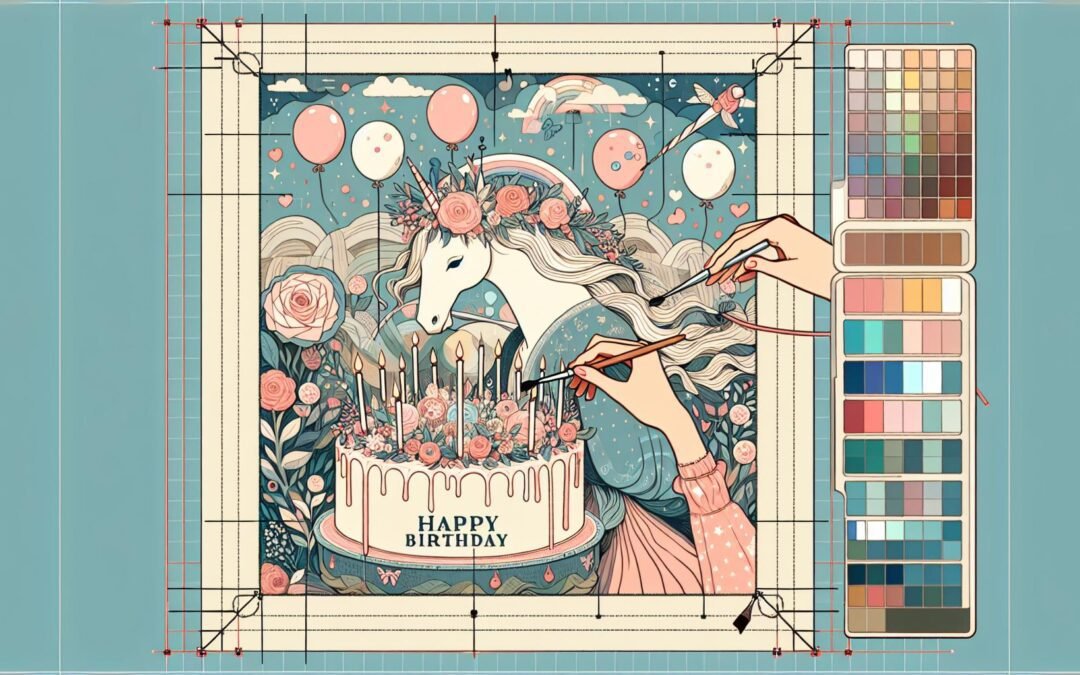Birthday poetry for her unspools as both vibrant pageant and quiet confession, guided by centuries of longing, ritual, invention, and subversion. Poets calibrate imagery with intention, blending historical voices present in courtly halls and kitchen tables. Within this evolving genre, references to lovers, daughters, mothers, and forgotten muses echo in motifs as tactile as a ring’s engraving or as weightless as unnamed constellations. Early odes exalted an almost sacred femininity, but even a fleeting contemporary lyric can discharge the ordinariness of celebration to unveil experience, resilience, or rebellion. To trace these shifting idioms, examine not only the lineage patterned by Sappho and Rossetti, but also the ferocious improvisations by poets unafraid of discordant music and unpolished hope. Explore notable contemporary poets who shape these traditions.
Birthday Poetry for Her: Origins, Evolution, Voices
Before Sappho sang and Ovid arranged anniversaries for feminine figures, Greek ritual verse and Latin birthday invocations shaped the earliest contours of commemoration. Myths produced a climate where the woman’s celebration intertwined with lunar renewal and sacrificial festival—whether for maiden, mother, or divine protector. However, there is scant evidence of dedicated birthday verse from Sappho or female addressees in early Roman poetry, further shrouding the origins in uncertainty. As chivalric Europe emerged, a new vocabulary appeared: troubadours turned birthdays into occasions for layered allegory, couching praise in courtly paradox and spiritual metaphor. The woman became prism and altar, muse and cipher, her singularity seen always through the liturgy of social expectation.
Shifting Forms and Motifs: From Elizabethan Order to Modern Innovation
Elizabethan lyricists, energized by imported sonnet forms through Thomas Wyatt, harnessed meter and rhyme to interrogate female personhood and calendar marking. Birthdays for queens or beloveds merged private reflection with public spectacle. In the Romantic age, Wordsworth and Shelley used storms, stars, lilies, and rivers to parallel woman’s presence with the world’s sovereign motion—though documentation for explicit birthday poems from these authors is elusive. By the Victorians, Browning and Rossetti constructed more intimate, ritualized scenes, with Rossetti’s “A Birthday” crystallizing sanctuary and transformation without referencing the literal anniversary. This period’s verse could pivot between spiritual adoration and gentle critique, sheltering female agency within careful phrase.
Modern poets fracture old templates. H.D. and Moore extracted the architecture from odes, producing clipped, imagistic lyric where a woman’s birthday could signal metamorphosis, crisis, or emancipation. Many contemporary poets now infuse birthday poetry for her with intersectional nuance, using memory or myth as tools of resistance. Poems reframe the genre as public reclamation or private declaration, functioning both as gift and manifesto.
Cultural Dimensions and Motif Reimagining
Regional tradition feeds the language of marking women’s anniversaries. In Japan, cherry blossoms signal transient beauty within family celebration, while in Yoruba or Akan poetry, ancestry and collective memory root the birthday firmly in communal obligation. In Latin American traditions, the quinceañera’s threshold unites sacred iconography and coming-of-age testimony. Such diversity renders birthday poetry for her perpetually in flux, as symbols transform when filtered through local folklore, language, and ritual intention.
Across cultures, certain motifs recur: flowers denote renewal or defiance; the moon, cyclical wisdom; seasons, the shifting map of womanhood’s resilience or fragility. By repurposing or inverting these icons, poets track both revolution and continuity. Visit this Chaucerian overview for insights into medieval versatility with motif and voice.
Symbolic Language, Form, and Emotional Resonance
A singular vocabulary works at the root of birthday poetry for her. Poets avoid reduction to “beautiful” or “dear”; instead, they replace cliché descriptors with evocative phrases, conjuring tactile memories and singular essence. Hair glows with “mica-bright persistence,” laughter threads “candle-smoke” through echoing kitchens. The form’s intensity grows through verbs that dance, fracture, or heal—unfurl, anchor, fracture, gather. The recipient—sister, partner, friend, mother, or mentor—emerges as a presence sculpted from collected metaphors and the inventory of remembered gestures.
Metaphor, Music, and Narrative Arc
Transformation governs the figurative language: a birthday can become “the syllable between storms,” or “the long hush before harvest.” Simile grounds emotion: “smiling with rainlight through broken glass.” Structure follows function: some work as villanelle or sonnet, echoing annual recurrence. In other hands, free verse serves as incantation, each line an improvisation. Alliteration and assonance heighten the private ritual of reading, drawing the eye and ear together. A mother’s name, a favorite fruit reinforce intimacy and memory. See poems that amplify emotional tone in similar ways.
Tone, Tension, and New Agency
Friendship poems tilt toward playful metaphor and everyday imagery, sometimes admitting laughter as resistance. Love poems skew reverent, with dense symbolic fields, layered vowel harmonies, and allusions to myth or fairy tale. In familial verse, nostalgia glimmers amid scents, objects, habits that appear mundane, but reach toward sacrament. Across these tonal landscapes, form mirrors relationship: spare free verse for the distant, intricate rhyme for the intimate. Rather than immobilize the female presence, contemporary birthday poems re-cast her as narrator, agent, provocateur.
In recent traditions, active verbs and ascending imagery animate the text. Audre Lorde’s lines, for example, render shared authorship, self-invention, and the refusal of inert icons. Instead of merely receiving praise, the woman directs celebration, sets conditions, or questions. Adrienne Rich, June Jordan, and Eileen Myles structure birthdays as platforms for lineage recovery, queer kinship, or resistance against silence. For more context on transformation in poetic address, browse this resource on women’s verse.
Intersectionality and the Unfixed Self
Complex identities penetrate birthday poetry for her, amplifying the specific while inviting solidarity. Black and Indigenous poets, for instance, braid ancestral experience into the contemporary moment, marking birthdays as prisms through which survival, inheritance, or defiance is refracted. For queer writers, the chosen family and ritual become a means of remapping belonging, with birthday poems standing in for acknowledgment denied elsewhere. This intersectional layering disrupts homogenous praise, demanding that both joy and struggle inhabit the text.
Birthday poetry for her finds new life across digital commons—social platforms, email threads, virtual readings. Poems circulate in virtual timelines, reshaping ephemeral wishes into crafted, enduring moments. Customization thrives: names, fragments of shared playlists, or reference to recent joys infuse poems delivered online, intensifying connection. This digital proliferation democratizes poetic address, allowing voices previously muted by tradition to steer the genre’s present course. Visit a collection of contemporary poetry books for further reading on current practice.
Collective Writing, Archive, and New Horizons
As users share original work and remix classics, the boundaries between oral, written, and visual forms thin. Animated graphics or video can amplify the sensory impact, and crowdsourced anthologies ensure minority traditions reach readers beyond family or nation. In this fertile environment, a single birthday poem can inhabit private pages or global stages, transmitting agency and witness along with affection. For curated archives, consider browsing Romantic Poems or modern collections for her that survey myriad techniques and interpretations. Further reading is also available at Poets.org and Poetry Foundation.

